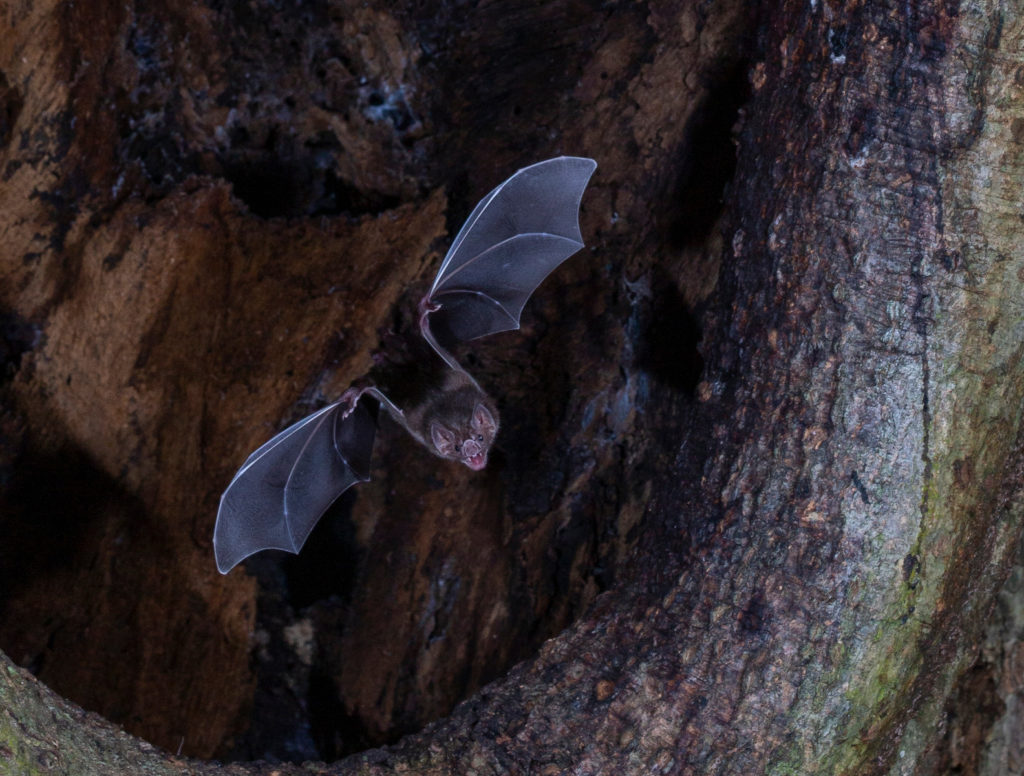The News in Brief:
- Olfactory receptors are some of the most difficult genes to sequence in the genome due to their repetitive nature.
- Researchers compared different ways to sequence olfactory receptors in the vampire bat (which has a comparable number of olfactory re1ceptors to humans) and discovered a cost-effective way to accurately sequence these genes.
- The success of the gene sequencing method makes it feasible to apply it across many species with the goal to discover how evolution has shaped the sense of smell in animals with different sensory abilities.
STONY BROOK, N.Y., September 19, 2019 – The sense of smell is one of the most poorly understood of the five major senses. But now an international team of scientists led by Laurel Yohe of Stony Brook University suggests a new method to quantify olfactory receptors by sequencing them in vampire bats may hold the key to unraveling the mysteries of smell. Their findings are published this week in Molecular Ecology Resources.
According to Yohe, a PhD alumna and affiliated research associate in the lab of Liliana Dávalos in the Department of Ecology and Evolution, as well as a National Science Foundation Postdoctoral Fellow at Yale University, understanding how to obtain accurate numbers of olfactory receptor counts in the mammalian genome is major aspect to understanding the sense of smell. The difficulty is that genes related to smell are highly similar to one another, and therefore determining the correct sequencing of the hundreds of olfactory receptors is difficult and similar to analyzing many pieces of a puzzle that are nearly the same.
The researchers selected the vampire bat to compare for the first time different ways to sequence olfactory receptors. The vampire bat relies on its sense of smell to find its prey and has a comparable number of olfactory receptors to humans (approximately 400). They compared different methods to get the DNA sequences of olfactory receptor genes using the vampire bat genome. The methods ranged from traditional polymerase chain reaction (PCR) and cloning to newer technologies to probe sequences of bat olfactory receptors.
They discovered that an approach called “targeted sequence capture,” which involves the researchers to design generic ‘search’ motifs that ‘bait’ olfactory receptors. This makes for a quick and efficient sequencing of the olfactory receptors. By using this method, they discovered a fast and cost-effective method to find up to 90 percent of the genes involved in smell. The method also found almost four times the amount of intact olfactory receptors as was previously reported in published works.
“The comparison study changes our interpretation of what constitutes a good smeller,” says Yohe. “Our method makes it feasible to probe the DNA behind the sense of smell, across hundreds of species and thousands of genes, which may ultimately illuminate some of the mysteries behind the sense of smell.”
The research was funded in part by the National Science Foundation (Grant numbers NSF-DEB 1701414 and NSF-DEB 1442142) and the American Society of Mammologists.
###
About Stony Brook University
Stony Brook University, widely regarded as a SUNY flagship, is going beyond the expectations of what today’s public universities can accomplish. Since its founding in 1957, this young university has grown to become one of only four University Center campuses in the State University of New York (SUNY) system with over 26,000 students, more than 2,700 faculty members and 18 NCAA Division I athletic programs. Our faculty have earned numerous prestigious awards, including the Nobel Prize, Pulitzer Prize, Indianapolis Prize for animal conservation, Abel Prize and the inaugural Breakthrough Prize in Mathematics. The University offers students an elite education with an outstanding return on investment: U.S.News & World Report ranks Stony Brook among the top 40 public universities in the nation. Its membership in the Association of American Universities (AAU) places Stony Brook among the top 62 research institutions in North America. As part of the management team of Brookhaven National Laboratory, the University joins a prestigious group of universities that have a role in running federal R&D labs. Stony Brook University fuels Long island’s economic growth. Its impact on the Long island economy amounts to $7.38 billion in increased output. Our state, country and world demand ambitious ideas, imaginative solutions and exceptional leadership to forge a better future for all. The students, alumni, researchers and faculty of Stony Brook University are prepared to meet this challenge.
Original post https://alertarticles.info
